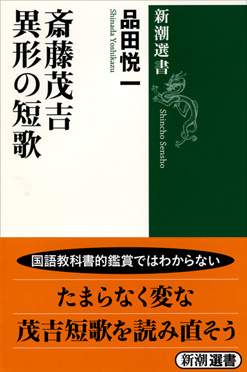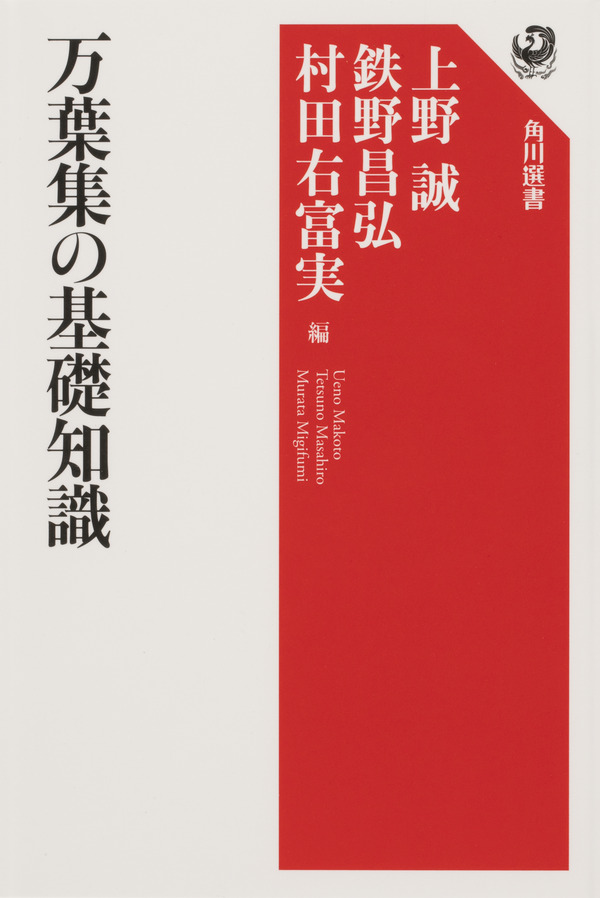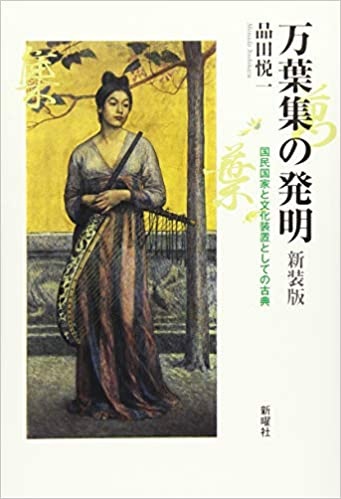
Title
Shincho Sensho: Saitō Mokichi Igyō no Tanka (Saitō Mokichi: Atypical Poetry)
Size
255 pages, Irregular 188×130 mm
Language
Japanese
Released
February 21, 2014
ISBN
978-4-10-603741-2
Published by
Shinchosha Publishing
Book Info
See Book Availability at Library
Japanese Page
Saitō Mokichi (1882-1953): even among the assembled poets of modern era, he boasts recognition beyond compare. However, his real significance is surprisingly unknown.
For a long time now, Mokichi’s poetic accomplishments have been singularly appraised with epithets about how he resurrected the “Man’yō tradition” in the modern age or applied a modern sensibility to “Man’yō prosody” based on his usage of material from the ancient poetry anthology Man’yōshū in his own work. However, when I went back to the formative years of his linguistic and poetic activity and fundamentally reconsidered it, I arrived at precisely the opposite opinion to how he has been understood up to now.
To represent the world as an unfamiliar space, thrusting before readers common, everyday scenes in the form of bizarre spectacles that would elicit shock; this was the reason for Mokichi’s mastery of unusual vocabulary and atypical syntax. His pursuit of this poetic mood corresponds with what later literary critics have called “defamilialization” or “making something strange,” so what we now call “Man’yō prosody” was, at least when Mokichi introduced his first poetry collection “Red Lights,” none other than a necessary measure for creating this linguistic world.
However, at some point, society began to treat him as the embodiment of tradition, and what was worse, the man himself agreed to accept that role and played it to the utmost of his ability. This was part of a larger process in which the poetry collection Man’yōshū, a cultural property created by ancient aristocrats, was reinterpreted as a communal resource that supported the spiritual connections of the modern Japanese nation. That is to say, Mokichi became one foci in the process by which the Man’yōshū became a national poetry anthology. In wartime Japan, the Man’yōshū, along with the Kojiki and the Nihon shoki, were used as tools to stimulate the nation’s fighting spirit and propagated as though they were texts about loyalty and patriotism. At that time Mokichi’s sense of duty as a national poet was aroused, and in turn he produced a number of poems that praised war.
Mokichi died in February of 1953, but the matter did not end there. After his death (and obviously of no concern to the man himself), his image was celebrated as if he were an individual of model morality. In particular, his poem series “Mother Dying” became a standard inclusion in Japanese textbooks for high school students, and the real significance of Mokichi as a poet became more and more covered up.
In my book Saitō Mokichi: Atypical Poetry, I thoroughly reconstruct the manner in which “Mother Dying” became a standard textbook inclusion and show that the establishment of the poem series as teaching material for morality encouraged this depiction of Mokichi. In contrast, based on the principle of “not reading as if it were a classroom,” I demonstrate how to read the series of 59 poems as a text extracted from its conventional setting. I go on to dissect the disfigured form that underlies the atypical world of Mokichi’s poetry based on the two aspects of syntax and prosody. In the final section of the book, titled “Japanese to Read Silently,” I pick a fight with Saitō Takashi, who is the author of famous Japanese to Read Aloud, though I am still waiting on a response.
(Written by SHINADA Yoshikazu, Professor, Graduate School of Arts and Sciences / 2018)



 Find a book
Find a book



